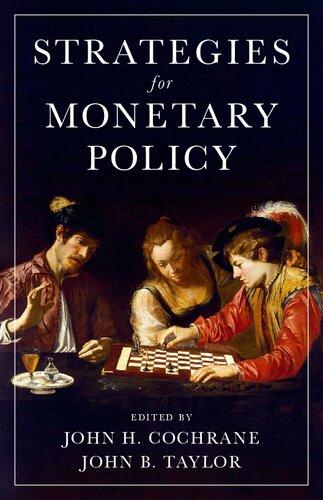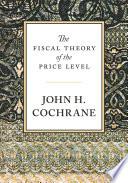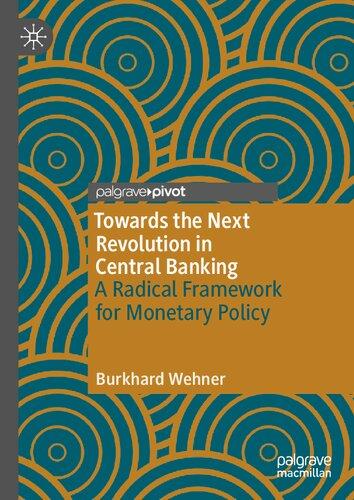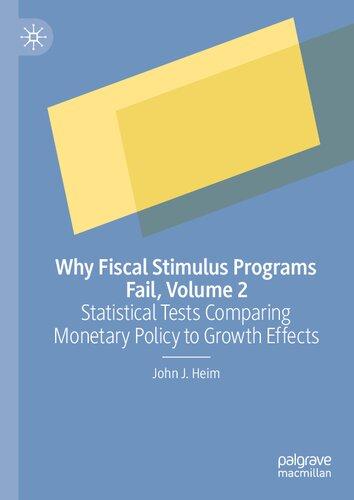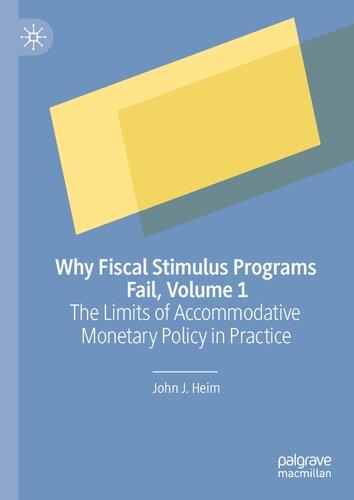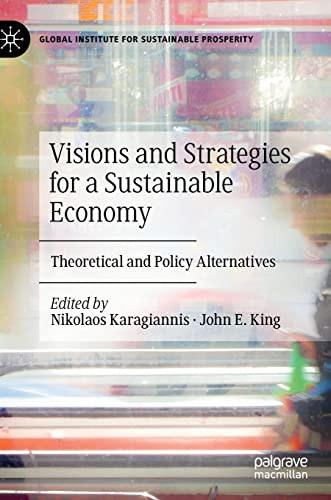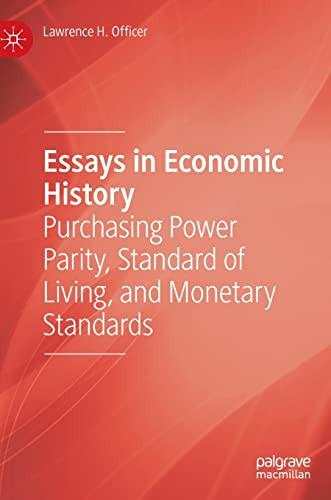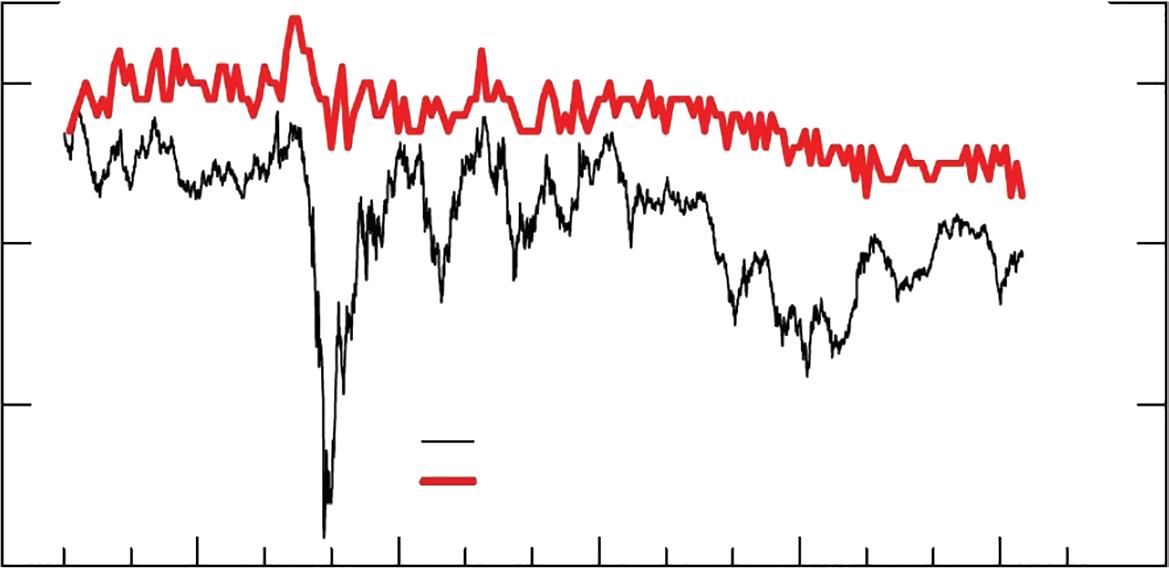Preface
John H. Cochrane and John B. Taylor
The chapters in this book were prepared and presented to help inform an important review of monetary policy undertaken by the Federal Reserve in 2019. Like the Fed’s review, the book focuses on the evaluation of strategies, tools, and communication practices for monetary policy. The chapters address two related questions that are central to an evaluation of policy. First, can a given strategy be improved upon, for example, by altering the degree of data dependence, by reconsidering monetary tools or instruments, or by changing communications about the strategy? Second, how robust are different policy strategies? The aim of the conference and this book is to present the latest research developments and debate these crucial policy questions. It is meant to be an integral component of the monetary policy review, and of the academic and policy community’s ongoing evaluation of this review and its underlying strategic issues.
The results went well beyond our expectations. The formal presentations were original and insightful. The market symposium and policy symposium were exciting, with many novel points and suggestions. And the discussions—all recorded and transcribed here—by academic researchers, market participants, members of the media, and monetary policy makers covered much new ground. All of this, in our view, adds greatly to the review of policy that the Federal Reserve began. We are also confident that the results will be useful and relevant to a similar review by the European Central
x Preface
Bank, which is now currently under way, and to broader understanding of how monetary policy should be conducted.
The leadoff chapter is by Richard Clarida, vice chair of the Federal Reserve Board. He considers the impact of models and markets on the strategy of monetary policy, emphasizing the key question of data dependence. “Data dependence” states that monetary policy should react to economic events as they come along rather than follow a preannounced track, but it should react in a predictable way. Data dependence needs to be clear about what data to respond to and what reaction depends on it, or it can appear to be whimsical and introduce uncertainty into the economy.
Clarida argues that there are two forms of data dependence. The first describes how the instruments of monetary policy should react to the numerical difference between actual economic outcomes and target outcomes for inflation or unemployment. This is a normal rule-like question, and getting the right sign and size of response is essential. That the interest rate should react by more than one to one with the inflation rate is an example of rightsizing mentioned by Clarida.
The second type of data dependence considered by Clarida involves measurement of the key benchmarks in the policy rule: the equilibrium rate of interest and potential GDP, or the natural rate of unemployment. The rule in the first type of data dependence states that the deviation of the interest rate from the natural rate should react to the deviation of GDP from potential, or the deviation of the unemployment rate from the natural rate. One needs to measure those benchmarks as well as the actual unemployment and inflation rates in order to properly set monetary policy. In recent years, empirical research has suggested that both the equilibrium interest rate and the natural rate of unemployment should be adjusted down. That research has also shown, however, just how difficult it is to define and measure these quantities
Clarida emphasizes that both types of data dependence are part of rules-based monetary policy, not a reason to abandon strategies for monetary policy. Clarida does not argue for altering the degree of data dependence, but rather for making it more accurate and embedding it into a rules-based framework. The more accurate and precise is the dependence of policy on data, better the policy strategy will be.
The second chapter is also about data dependence and policy strategy. Here Andrew Lilley and Ken Rogoff make the case, as their title has it, for implementing effective negative interest rate policy. When one plugs real-world inflation or output data into policy rules for the interest rate, one sometimes finds that the rules prescribe negative interest rates. Lilley and Rogoff argue that negative interest rates are no reason to hold the rate at zero or above.
They consider regulatory changes that would allow the interest rate to go more easily to -2 or -3 percent, including steps to stop people from holding large amounts of cash, which pays a better rate, at 0 percent, and potentially undermines negative interest rate policies. They recognize, however, that regulatory lags and other resistance might prevent this change, and thus consider alternatives to negative interest rates, such as quantitative easing (QE) to drive down longerterm interest rates, helicopter money, forward guidance, and a higher inflation target. This part of the paper presents a valuable and balanced summary of the pros and cons of such “unconventional” monetary policies. The authors point out, however, that recent research indicates that quantitative easing may have had little or no effect in the United States, at least outside of the normal lender-of-last-resort role of the central bank and beyond its effect as a signal of how long the Fed is likely to keep interest rates at zero.
Lilley and Rogoff then go on to consider removing the zero or effective lower bound constraint, stating that the “elegant and effective tool to restore monetary policy effectiveness at the zero bound would be unconstrained negative interest rate policy, assuming
all necessary legal, institutional, and regulatory changes were first instituted.” But they stress that “no country yet has taken the steps necessary to have the kind of deeply negative rates we are discussing here (say, minus 2 percent or more).” The discussion of possible regulatory changes in insightful and valuable, as is their discussion of layering and their response to critics of negative rates, including Monika Piazzesi later in this book. Anyone interested in the zero or effective lower bound on the interest rate—which is anyone interested in monetary policy—should read and consider this chapter carefully.
In his commentary on Lilley and Rogoff, Andrew Levin agrees that “QE and other unconventional monetary policy tools are complex, opaque, and ineffectual,” and he therefore proceeds to argue that reform is needed. He proposes a more extensive use of digital cash, drawing on his work with Michael Bordo, to allow negative interest rates to be used more widely.
Chapter 3 also deals with the lower bound on interest rates. Entitled “Tying Down the Anchor: Monetary Policy Rules and the Lower Bound on Interest Rates,” its authors, Thomas Mertens, of the San Francisco Fed, and John Williams, president of the New York Fed, use an econometric model to evaluate alternative policy rule and find the one that works best.
Mertens and Williams consider three types of monetary policy rules: (1) a standard inflation-targeting interest rate rule in which the Fed reduces its response to higher inflation and output, in order to bias the economy toward higher interest rates and inflation and thereby reduce the probability of hitting the lower bond; (2) a rule in which the average inflation target is higher than with standard inflation targeting, though the strength of responses to deviations is unchanged; and (3) price-level targeting rules, in which the Fed allows substantial inflation after a low-inflation episode, until the price level recovers to its target, and vice versa. A variant of rule (2) has a similar flavor. It is an interest rate rule that “makes up
for past missed stimulus due to the lower bound” by allowing the central bank to condition its interest on the sum of past shortfalls in interest rate cuts, as identified in earlier work by Reifschneider and Williams.
They show, by simulating the policy rules in the model, that the price-level targeting rule and the Reifschneider-Williams makeup-for-shortfalls rule work best among the alternatives. They conclude by noting that “further work is needed to evaluate their robustness by analyzing them within different economic models.” They also recommend quantitative assessment of the policy with an estimated larger-scale model.
In Chapter 4, Jim Hamilton offers “Perspectives on US Monetary Policy Tools and Instruments,” which points out that quantitative easing does not seem to have affected interest rates and the economy. This finding supports statements by Lilley and Rogoff and by Levin summarized above, and also comments by Peter Fisher in this book.
Hamilton presents empirical evidence in time-series charts that the longer-term interest rate rises during periods when the Federal Reserve is engaged in large-scale purchases of domestic bonds, rather than declining as the Fed expected. See especially Hamilton’s figure 4.2. This finding suggests that other Fed research—presented for example at the Chicago Fed review conference—should focus on explaining this reverse impact. The policy impact of quantitative easing on long-term interest rates is a key part of the Fed’s review, and a key part of its contingency plan for a future zero bound episode.
With Volker Wieland, we contribute chapter 5, which focuses on the robustness of current policy. The chapter compares the interest rate prescriptions that result from the rules published since 2017 by the Fed in its semiannual Monetary Policy Report with the actual path of the federal funds rate. These rules include the Taylor rule, a “balanced-approach” rule, a difference rule that responds to growth rather than levels of inflation and unemployment, and two rules
that take particular account of periods with near-zero federal funds rates by implementing a forward-guidance promise to make up for zero bound periods with looser subsequent policy. The chapter evaluates these monetary policy rules in seven well-known macroeconomic models—a small New Keynesian model, a small Old Keynesian model, a larger policy-oriented model, and four other models from the Macro Model Data Base. We regard robustness across models as an essential part of the evaluation process.
The chapter reports that departures—a measure of discretion— from all the rules reported by the Fed were small in most of the 1980s and 1990s, a period of relatively good macroeconomic performance. However, such discretion began to grow again in the early 2000s, though not as large as in the 1970s, and this discretion amplified prior to the 2007–09 recession.
The chapter shows that the rules in the Fed’s Report work well. However, some are not very robust. The first difference rule does very well in forward-looking New Keynesian models but very poorly in backward-looking Old Keynesian models. The chapter also shows that many of the Fed’s reported rules are close to the inflation-output volatility curve of optimal rules. Any rule may be better than no rule.
In commenting in the chapter, David Papell notes that, in general, deviations from rules are very large in poor performance periods and very low during periods with good performance. He also shows the importance of robustness by demonstrating how results from different models are much different from one another.
An important tradition of the monetary policy conferences held at the Hoover Institution in recent years has been the inclusion of market participants and policy makers into the debates and discussions. In keeping this tradition, this book contains two fascinating symposia along these lines.
The first symposium is on the interaction of markets and policy. It brings market participants directly into the discussion, including
Mickey Levy, Scott Minerd, and Laurie Hodrick, with an overview and introduction by George Shultz. The key issue addressed by all three presenters is that policy makers must take the interaction of markets and policy strategies into account when designing monetary strategies. As Hodrick puts it: “The interaction of markets and policy is actually a full circle. Not only are firm valuations affected by Fed policy . . . but the Fed also interprets data from the economy, including stock market price levels, as additional noisy signals with which to set its policy.” Levy and Minerd offer suggestions for improvement that, in our view, would improve policy outcomes and should be seriously considered by the Fed. As Levy recommends, “The Fed must take the lead to break its negative self-reinforcing relationship with financial markets by taking steps to rein in its activist fine-tuning of the economy and focus on a strategy for achieving its dual mandate.” Minerd argues that the Fed should “allow more volatility in short-term rates through revised open market operations policy or setting a wider fed funds target range. This would allow short-term rates to more accurately reflect changes in the market demand for credit and reserves.”
The second symposium is on monetary strategies in practice. It brings Fed policy makers into the discussion, including Jim Bullard, Mary Daly, Robert Kaplan, and Loretta Mester, with Charles Plosser as the chair.
Bullard presents a new overlapping generations model and shows how a policy rule of nominal GDP targeting is optimal. Nominal GDP targeting is similar to price-level targeting, in that it follows a period of less inflation with a period of inflation above target, and expectations of that future inflation may help to stimulate the economy during any current recession. In this logic, it is a new rationale for an old approach to policy, but one that still gets much attention. Daly addresses the lower bound on interest rates, as do Mertens and Williams, and concludes, after carefully considering alternatives, that “average inflation targeting [is] an attractive option.”
Kaplan considers the main reasons that inflation has been below the Fed’s inflation target of two, and he draws the implication that “we don’t want inflation to run persistently below or above our 2 percent target. Sustained deviations from our inflation target could increase the likelihood that inflation expectations begin to drift or become unanchored.”
Mester addresses the broadest aspects of the Fed’s review of its framework and concludes that “effective communication will be an essential component of the framework. I believe there are ways we can enhance our communications about our policy approach that would make any framework more effective.” She has several suggestions; the first, which seems particularly important, is that “simple monetary policy rules can play a more prominent role in our policy deliberations and communications. . . . The Board of Governors has begun to include a discussion of rules as benchmarks in the Monetary Policy Report. . . . This suggests that systematic policy making is garnering more support.” In many ways, this recommendation and assessment, which concludes the policy panel and the whole conference, highlights the theme of this book Strategies of Monetary Policy.
CHAPTER ONE Models, Markets, and Monetary Policy
Richard H. Clarida
The topic of this volume and the Monetary Policy Conference it originates from, Strategies for Monetary Policy, is especially timely. The Federal Reserve System is conducting a review of the strategy, tools, and communication practices we deploy to pursue our dualmandate goals of maximum employment and price stability. In this review, we expect to benefit from the insights and perspectives that are presented here, as well as those offered at other conferences devoted to this topic, as we assess possible practical ways in which we might refine our existing monetary policy framework to better achieve our dual-mandate goals on a sustained basis.
This essay is not, however, devoted to a broad review of the Fed’s monetary policy framework—that process is ongoing, and I would not want to prejudge the outcome—but it will instead focus on some of the important ways in which economic models and financial market signals help me think about conducting monetary policy in practice after a career of thinking about it in theory.
THE ROLE OF MONETARY POLICY
Let me set the scene with a very brief—and certainly selective— review of the evolution over the past several decades of professional
The views expressed are my own and not necessarily those of other Federal Reserve Board members or Federal Open Market Committee participants. I would like to thank Ed Nelson and Bob Tetlow for their assistance in preparing this speech.
thinking about monetary policy. I will begin with Milton Friedman’s landmark 1967 American Economic Association presidential address, “The Role of Monetary Policy.”1 This article is, of course, most famous for its message that there is no long-run, exploitable trade-off between inflation and unemployment. And in this paper, Friedman introduced the concept of the “natural rate of unemployment,” which today we call u ∗ . 2 What is less widely appreciated is that Friedman’s article also contains a concise but insightful discussion of Wicksell’s “natural rate of interest”—r ∗ in today’s terminology—the real interest rate consistent with price stability. But while u ∗ and r ∗ provide key reference points in Friedman’s framework for assessing how far an economy may be from its long-run equilibrium in labor and financial markets, they play absolutely no role in the monetary policy rule he advocates: his well-known k-percent rule that central banks should aim for and deliver a constant rate of growth of a monetary aggregate. This simple rule, he believed, could deliver long-run price stability without requiring the central bank to take a stand on, model, or estimate either r ∗ or u ∗. Although he acknowledged that shocks would push u away from u ∗ (and, implicitly, r away from r ∗), Friedman felt the role of monetary policy was to operate with a simple quantity rule that did not itself introduce potential instability into the process by which an economy on its own would converge to u ∗ and r ∗ . 3 In Friedman’s policy framework, u ∗ and r ∗ are economic destinations, not policy rule inputs.
1. See Friedman (1968). Recent retrospectives on Friedman’s (1968) American Economic Association address that consider its implications for monetary policy analysis include Hall and Sargent (2018), Laidler (2018), Mankiw and Reis (2018), and Nelson (2018).
2. See Friedman (1968, 8–11). At roughly the same time, Phelps (1967) derived similar results using a formal economic model.
3. Another consideration motivating Friedman’s choice of rule was his concern that a more active monetary policy strategy might be difficult to formulate because of the “long and variable lags” in the effect of monetary policy (a term he had coined in Friedman 1948, 254).
Of course, I do not need to elaborate for this audience that the history of k-percent rules is that they were rarely tried, and when they were tried in the 1970s and the 1980s, they were found to work much better in theory than in practice.4 Velocity relationships proved to be empirically unstable, and there was often only a very loose connection between the growth rate of the monetary base—which the central bank could control—and the growth rate of the broader monetary aggregates, which are more tightly linked to economic activity. Moreover, the macroeconomic priority in the 1980s in the United States, the United Kingdom, and other major countries was to do “whatever it takes” to break the back of inflation and to restore the credibility squandered by central banks that had been unable or unwilling to provide a nominal anchor after the collapse of the Bretton Woods system.
By the early 1990s, the back of inflation had been broken (thank you, Paul Volcker), conditions for price stability had been achieved (thank you, Alan Greenspan), and the time was right for something to fill the vacuum in central bank practice left by the realization that monetary aggregate targeting was not, in practice, a workable monetary policy framework. Although it was mostly unspoken, there was a growing sense at the time that a simple, systematic framework for central bank practice was needed to ensure that the hard-won gains from breaking the back of inflation were not given away by shortsighted, discretionary monetary experiments that were poorly executed, such as had been the case in the 1970s.
4. See Clarida, Galí, and Gertler (1999, Result 10, 1687). Monetary targeting was adopted to a limited degree by the Federal Reserve and other central banks in the 1970s and 1980s, but it did not endure. Even during the period from 1979 to 1982, when the Federal Open Market Committee was most focused on monetary aggregates, policy makers were still concerned with interest rates in the setting of policy, and ultimate objectives for the output gap and inflation figured as criteria for policy decisions. See, for example, Taylor (1995, 1999), Clarida (1999), and Clarida, Galí, and Gertler (2000). In addition, Poole (1970) and Woodford (2003) are key references on the theoretical criticisms of monetary targeting.
POLICY RATE RULES
That vacuum, of course, was filled by John Taylor in his classic 1993 paper, “Discretion vs. Policy Rules in Practice.” The average reader of this book need not be reminded of the enormous impact this single paper had not only on the field of monetary economics but also—and more important—on the practice of monetary policy. For our purposes today, I will note that the crucial insight of John’s paper was that whereas a central bank could pick the “k” in a “k-percent” rule on its own, without any reference to the underlying parameters of the economy (including r ∗ and u ∗), a well-designed rule for setting a short-term interest rate as a policy instrument should, John argued, respect several requirements.5 First, the rule should anchor the nominal policy rate at a level equal to the sum of its estimate of the neutral real interest rate (r ∗) and the inflation target. Second, to achieve this nominal anchor, the central bank should be prepared to raise the nominal policy rate by more than one-for-one when inflation exceeds target (the Taylor principle). And, third, the central bank should lean against the wind when output—or, via an Okun’s law relationship, the unemployment rate—deviates from its estimate of potential (u ∗).
In other words, whereas in Friedman’s k-percent policy rule u ∗ and r ∗ are destinations irrelevant to the choice of k, in the Taylor rule—and most subsequent Taylor-type rules—u ∗ and r ∗ are necessary inputs. As Woodford (2003) demonstrates theoretically, the first two requirements for a Taylor-type rule are necessary for it to be consistent with the objective of price stability. The
5. On the specification and properties of the Taylor rule, see especially Taylor (1993, 1999), as well as Clarida, Galí, and Gertler (1999, 2000) and Woodford (2003). Another key study of simple interest rate rules was Henderson and McKibbin (1993). It should be noted that a Taylor-type rule is an instrument rule for achieving the inflation objective that enters the rule. In practice, it is one way to implement a flexible inflation targeting regime. See Bernanke et al. (1999) and Svensson (1997, 1999) for important contributions on the considerations involved in specifying an inflation-targeting monetary policy strategy.
third requirement—that monetary policy lean against the wind in response to an output or unemployment gap—not only contributes to the objective of price stability, but also is obviously desirable from the perspective of a central bank like the Fed that has a dual mandate.
The Taylor approach to instrument-rule specification has been found to produce good macroeconomic outcomes across a wide range of macroeconomic models. Moreover, in a broad class of both closed and open economy dynamic stochastic general equilibrium, or DSGE, models, Taylor-type rules can be shown to be optimal given the underlying micro foundations of these models.
In original formulations of Taylor-type rules, r ∗ was treated as constant and set equal to 2 percent, and potential output was set equal to the Congressional Budget Office (CBO) estimates of potential output, or, in specifications using the unemployment rate as the activity variable, u ∗ was set equal to the CBO’s estimate of the natural unemployment rate. These assumptions were reasonable at the time, and in the years before the global financial crisis I myself wrote a number of papers with coauthors that incorporated them.6
A DIVE INTO DATA DEPENDENCE
Fast-forward to today. At each Federal Open Market Committee (FOMC) meeting, my colleagues and I consult potential policy rate paths implied by a number of policy rules, as we assess what adjustments, if any, may be required for the stance of monetary policy to achieve and maintain our dual-mandate objectives.7 A presentation and discussion of several of these rules has been
6. See, for example, Clarida, Galí, and Gertler (1999, 2000).
7. For the FOMC’s description of its mandate, see the FOMC’s (2019) “Statement on Longer-Run Goals and Monetary Policy Strategy.” The FOMC first adopted this statement in January 2012 and has reaffirmed the statement at the start of each subsequent year (including in 2019, when all seventeen FOMC participants supported it).
Clarida
included in the semiannual Monetary Policy Report to Congress since July 2017.8 One thing I have come to appreciate is that as I assess the benefits and costs of alternative policy scenarios based on a set of policy rules and economic projections, it is important to recognize up front that key inputs to this assessment, including u ∗ and r ∗ , are unobservable and must be inferred from data via models.9 I would now like to discuss how I incorporate such considerations into thinking about how to choose among monetary policy alternatives.
A monetary policy strategy must find a way to combine incoming data and a model of the economy with a healthy dose of judgment—and humility!—to formulate, and then communicate, a path for the policy rate most consistent with the central bank’s objectives. There are two distinct ways in which I think that the path for the federal funds rate should be data dependent.10 Monetary policy should be data dependent in the sense that incoming data reveal at any point in time where the economy is relative to the ultimate objectives of price stability and maximum employment. This information on where the economy is relative to the goals of monetary policy is an important input into interest rate feedback rules—after all, they have to feed back on something. Data dependence in this sense is well understood, as it is of the type implied by a large family of policy rules, including Taylor-type
8. The box “Monetary Policy Rules and Systematic Monetary Policy” in the Board of Governors’ February 2019 Monetary Policy Report (MPR) describes how simple policy rules are used in theory and in practical policy making. See Board of Governors (2019). The box “Complexities of Monetary Policy Rules” in the July 2018 MPR discusses how shifts in r∗ complicate monetary policy decision making. See Board of Governors (2018). A note, titled “Policy Rules and How Policymakers Use Them,” on the board’s website covers similar ground and is available at https://www federalreserve gov/monetarypolicy/policy-rules-and -how-policymakers-use-them htm.
9. As Friedman once put it, “I don’t know what the natural rate is, neither do you, and neither does anyone else” (quoted in Bennett 1995).
10. See Clarida (2018a, 2018b).
FIGURE 1.1. Assessments of the Longer-Run Normal Unemployment Rate from the Summary of Economic Projections
Source: Federal Reserve Board, Summary of Economic Projections for 2011 to 2013 (https://www.federalreserve.gov/monetarypolicy/fomc historical.htm) and for 2014 to 2018 (https://www federalreserve gov/monetarypolicy/fomccalendars htm).
Note: Calculated from the final Summary of Economic Projections in each calendar year (November for 2011; December for other years). The value shown is the median of the individual Federal Open Market Committee participant projections for the fourth quarter of each calendar year. (For 2014, the value is the midpoint of the central tendency, as the median is not publicly available.)
rules discussed earlier, in which the parameters of the economy needed to formulate such rules are taken as known. But, of course, key parameters needed to formulate such rules, including u ∗ and r ∗ , are unknown. As a result, in the real world, monetary policy should be—and in the United States, I believe, is— data dependent in a second sense: policy makers should and do study incoming data and use models to extract signals that enable them to update and improve estimates of r ∗ and u ∗ . As indicated in the Summary of Economic Projections, FOMC participants have, over the past seven years, repeatedly revised down their estimates of both u ∗ and r ∗ as unemployment fell and real interest rates remained well below prior estimates of neutral without the rise in inflation those earlier estimates would have predicted (figures 1.1 and 1.2). And these revisions to u ∗ and r ∗ appeared to have had an important influence on the path for the policy rate actually implemented in recent years. One could interpret any changes in the conduct of policy as a shift in the central bank’s reaction function. But in my view, when such changes result from revised estimates of u ∗ or r ∗ , they merely reflect an updating of an existing reaction function.
FIGURE 1.2. Assessments of the Longer-Run Inflation-Adjusted Federal Funds
Rate from the Summary of Economic Projections
Source: See the source note of figure 1.
Note: The value shown consists of the median of individual Federal Open Market Committee (FOMC) participant assessments of the longer-run nominal federal funds rate or midpoint of the target range, as given in the December Summary of Economic Projections for the indicated year, minus the FOMC’s inflation objective of 2 percent. (For each of the years shown, FOMC participants’ projections for the longer-run inflation rate also equaled 2 percent.)
In addition to u ∗ and r ∗, another important input into any monetary policy assessment is the state of inflation expectations. Since the late 1990s, inflation expectations appear to have been stable and are often said to be “well anchored.” However, inflation expectations are not directly observable; they must be inferred from models, other macroeconomic information, market prices, and surveys. Longerterm inflation expectations that are anchored materially above or below the 2 percent inflation objective present a risk to price stability. For this reason, policy makers should and do study incoming data to extract signals that can be used to update and improve estimates of expected inflation. In many theoretical rational expectations models, expected inflation is anchored at the target level by assumption. From a risk-management perspective, it makes sense, I believe, to regularly test this assumption against empirical evidence.
FINANCIAL MARKETS AND MONETARY POLICY—EXTRACTING SIGNAL FROM NOISE
Because the true model of the economy is unknown, either because the structure is unknown or because the parameters of a known
structure are evolving, I believe policy makers should consult a number and variety of sources of information about neutral real interest rates and expected inflation, to name just two key macroeconomic variables. Because macroeconomic models of r ∗ and long-term inflation expectations are potentially misspecified, seeking out other sources of information that are not derived from the same models can be especially useful. To be sure, financial market signals are inevitably noisy, and day-to-day movements in asset prices are unlikely to tell us much about the cyclical or structural position of the economy.11 However, persistent shifts in financial market conditions can be informative, and signals derived from financial market data—along with surveys of households, firms, and market participants, data, as well as outside forecasts—can be an important complement to estimates obtained from historically estimated and calibrated macroeconomic models.12
Interest rate futures and interest rate swaps markets provide one source of high-frequency information about the path and destination for the federal funds rate expected by market participants (figure 1.3). Interest rate option markets, under certain assumptions,
11. Uncertainty regarding r∗, u∗ , and long-term inflation expectations is not the only source of uncertainty that has implications for monetary policy. Edge, Laubach, and Williams (2005) show how the duration of a productivity shock can affect even the direction of the best monetary policy response. Erceg et al. (2018) find that even in conditions of substantial output gap uncertainty and uncertainty about the slope of the Phillips curve, a notable response to the estimated output gap in a Taylor-type rule is generally beneficial. And Eusepi and Preston (2018) show that replacing model-consistent expectations with forms of adaptive learning means that some, but not all, of the key results regarding best conduct in monetary policy under full information carry through.
12. Like many others, I believe that monetary policy should respond to financial market fluctuations when they have material implications for our outlook for employment and inflation, but monetary policy should not generally target asset prices themselves.
The Federal Reserve uses survey data and conducts surveys of its own on a range of macroeconomic and financial conditions. Among the surveys the Fed conducts are the Senior Loan Officer Opinion Survey on Bank Lending Practices and the Senior Credit Officer Opinion Survey on Dealer Financing Terms. In addition, the staff at the Federal Reserve Board uses disaggregated and high-frequency data to estimate the state of the economy in real time. Such data include disaggregated labor market data from ADP and data on expenditures from credit card transactions.
FIGURE 1.3. Projections of the Federal Funds Rate Path Implied by Surveys and Market Quotes
Source: Bloomberg Finance LP; Federal Reserve Board staff estimates; Wolters Kluwer, Blue Chip Financial Forecasts; Federal Reserve Bank of New York, Survey of Primary Dealers and Survey of Market Participants.
Note: The path with zero term premium is estimated using overnight index swap quotes with a spline approach and a term premium of 0 basis points.
can offer insights about the entire ex ante probability distribution of policy rate outcomes for calendar dates near or far into the future (figure 1.4). And, indeed, when one reads that a future policy decision by the Fed or any central bank is “fully priced in,” this is usually based on a “straight read” of futures and options prices. But these signals from interest rate derivatives markets are only a pure measure of the expected policy rate path under the assumption of a zero risk premium. For this reason, it is useful to compare policy rate paths derived from market prices with the path obtained from surveys of market participants, which, while subject to measurement error, should not be contaminated with a term premium. Market- and survey-based estimates of the policy rate path are often highly correlated. But when there is a divergence between the path or destination for the policy rate implied by the surveys and a straight read of interest rate derivatives prices, I place at least as much weight on the survey evidence (e.g., derived from
FIGURE 1.4. Market-Implied Probability Distribution of the Federal Funds Rate for Year-End 2019
Source: CME Group; Federal Reserve staff estimates.
Note: Estimated from federal funds futures options (not adjusted for risk premiums). Probabilities are zero for values above 2.75 percent.
the surveys of primary dealers and market participants conducted by the Federal Reserve Bank of New York) as I do on the estimates obtained from market prices (figure 1.3).
The Treasury yield curve can provide another source of information about the expected path and ultimate longer-run destination of the policy rate. But, again, the yield curve, like the interest rate futures strip, reflects not only expectations of the path of short-term interest rates but also liquidity and term premium factors. Thus, to extract signal about policy from noise in the yield curve, a term structure model is required. But different term structure models can and do
produce different estimates of the expected path for policy and thus the term premium. Moreover, fluctuations in the term premium on US Treasury yields are driven in part by a significant “global” factor, which complicates efforts to treat the slope of the yield curve as a sufficient statistic for the expected path of US monetary policy (Clarida 2018c). Again, here, surveys of market participants can provide useful information—for example, about “the expected average federal funds rate over the next 10 years,” which provides an alternative way to identify the term premium component in the US Treasury curve.
Quotes from the Treasury Inflation-Protected Securities (TIPS) market can provide valuable information about two key inputs to monetary policy analysis: long-run r ∗ and expected inflation.13 Direct reads of TIPS spot rates and forward rates are signals of the levels of real interest rates that investors expect at various horizons, and they can be used to complement modelbased estimates of r ∗ . In addition, TIPS market data, together with nominal Treasury yields, can be used to construct measures of “breakeven inflation” or inflation compensation that provide a noisy signal of market expectations of future inflation. But, again, a straight read of breakeven inflation needs to be augmented with a model to filter out the liquidity and risk premium components that place a wedge between inflation compensation and expected inflation.
As is the case with the yield curve and interest rate futures, it is useful to compare estimates of expected inflation derived from breakeven inflation data with estimates of expected inflation obtained from surveys—for example, the expected inflation over
13. Well before the launch of the TIPS market, Friedman (1984) stressed the benefits to monetary policy analysis that would arise from the availability of market-based estimates of longer-term inflation expectations, and he contrasted that situation with the one then prevailing, in which it was difficult to ascertain the real yields implied by the market’s longerterm nominal yields. In a similar vein, Campbell and Clarida (1987, 105) observed—also in the pre-TIPS era—that “it is hard to measure expected long-term inflation rates.”
FIGURE 1.5. Market- and Survey-Based Measures of Longer-Run Inflation Expectations
Note: Estimates based on smoothed nominal and inflation-indexed Treasury yield curves. Michigan survey expectations represent median responses. TIPS is Treasury InflationProtected Securities; CPI is consumer price index.
∗Adjusted for lagged indexation of Treasury Inflation-Protected Securities (the carry effect).
Source: Federal Reserve Bank of New York; Federal Reserve Board staff calculations; Bloomberg Finance LP; University of Michigan, Surveys of Consumers,
the next five to ten years from the University of Michigan Surveys of Consumers (figure 1.5). Market- and survey-based estimates of expected inflation are correlated, but, again, when there is a divergence between the two, I place at least as much weight on the survey evidence as on the market-derived estimates.
The examples I have mentioned illustrate the important point that, in practice, there is not typically a clean distinction between “model-based” and “market-based” inference of key economic variables such as r ∗ and expected inflation. The reason is that market prices reflect not only market expectations but also risk and liquidity premiums that need to be filtered out to recover the object of interest—for example, expected inflation or long-run r ∗ . This filtering almost always requires a model of some sort, so even market-based estimates of key inputs to monetary policy are, to some extent, model dependent.
14 Clarida
IMPLICATIONS FOR MONETARY POLICY
Let me now draw together some implications of the approach to models, markets, and monetary policy I have laid out in these remarks. Macroeconomic models are, of course, an essential tool for monetary policy analysis, but the structure of the economy evolves, and the policy framework must be—and I believe, at the Federal Reserve, is—nimble enough to respect this evolution. Although financial market signals can and sometimes do provide a reality check on the predictions of “a model gone astray,” market prices are, at best, noisy signals of the macroeconomic variables of interest, and the process of filtering out the noise itself requires a model—and good judgment. Survey estimates of the long-run destination for key monetary policy inputs can—and, at the Fed, do—complement the predictions from macro models and market prices (figure 1.6).14
Yes, the Fed’s job would be (much) easier if the real world of 2019 satisfied the requirements to run Friedman’s k-percent policy rule, but it does not and has not for at least fifty years, and our policy framework must and does reflect this reality. This reality includes the fact that the US economy is in a very good place. The unemployment rate is at a fifty-year low, real wages are rising in line with productivity, inflationary pressures are muted, and expected inflation is stable. Moreover, the federal funds rate is now in the range of estimates of its longer-run neutral level, and the unemployment rate is not far below many estimates of u ∗ . Plugging these estimates into a 1993 Taylor rule produces a federal funds rate very close to our current target range for the policy rate.15
14. It is important to note that the range of model estimates that is shown in the shaded portion of figure 1.6 is not a confidence interval. If parameter uncertainty in the estimates was allowed for, the range would be wider still. Yield curve data can also be used to compute estimates of the neutral rate of interest, as in Bauer and Rudebusch (2019).
15. Figure 1.7 summarizes the overall pattern displayed over time of various modelbased estimates of r∗. Recent r∗ estimates from the models considered, as well as their confidence intervals, are shown in figure 1.8. The sources for both figures are given at the bottom of figure 1.8.
to 10-year forward rate (assuming zero term premium)*
from model-based term premiums**
FIGURE 1.6. Measures of Longer-Run Federal Funds Rate Expectations
Source: Wolters Kluwer, Blue Chip Financial Forecasts; Federal Reserve Bank of New York, Survey of Primary Dealers and Survey of Market Participants; Federal Reserve Board staff estimates.
∗Monthly average 5- to 10-year forward rate derived from prices of Treasury securities.
∗∗Monthly average 5- to 10-year forward rate adjusted for three alternative model-based term premium estimates using Kim and Wright (2005), D’Amico, Kim, and Wei (2018), and Priebsch (2017).
∗∗∗Most recent longer-run value is from the December 2018 Blue Chip survey.
FIGURE 1.7. Historical Evolution of r ∗: Estimates from Selected Time-Series Models
Source: Federal Reserve Board staff estimates of the r ∗ models in figure 8 below.
Note: The shaded bars indicate periods of business recession as defined by the National Bureau of Economic Research.
Del Negro, Giannone, Giannoni, and Tambalotti (2017)
Holston, Laubach, and Williams (2017)
Johannsen and Mer tens (2016)
Kiley (2015)
Laubach and Williams (2003)
Lewis and Vazquez-Grande (2017)
Lubik and Matthes (2015)
FIGURE 1.8. Uncertainty Bands around Recent Point Estimates of r ∗ (Selected Models)
Note: The circle gives the r ∗ estimate for the first quarter of 2019 from each model, while the bars indicate the 95 percent confidence interval for the estimate.
Source: Federal Reserve Board staff calculations, using the models indicated on the x-axis.
So with the economy operating at or very close to the Fed’s dualmandate objectives and with the policy rate in the range of FOMC participants’ estimates of neutral, we can, I believe, afford to be data dependent—in both senses of the term as I have discussed—as we assess what, if any, further adjustments in our policy stance might be required to maintain our dual-mandate objectives of maximum employment and price stability.
References
Bauer, Michael D., and Glenn D. Rudebusch. 2018. “Interest Rates under Falling Stars.” Federal Reserve Bank of San Francisco Working Paper 2017-16, revised January 2019.
Bennett, Amanda. 1995. “Inflation Calculus: Business and Academia Clash over a Concept: ‘Natural’ Jobless Rate.” Wall Street Journal, January 24.
Bernanke, Ben S., Thomas Laubach, Frederic S. Mishkin, and Adam S. Posen. 1999. Inflation Targeting: Lessons from the International Experience. Princeton, NJ: Princeton University Press.
Board of Governors of the Federal Reserve System. 2018. Monetary Policy Report, July. Washington, DC: Board of Governors.
———. 2019. Monetary Policy Report, February. Washington, DC: Board of Governors.
Campbell, John Y., and Richard H. Clarida. 1987. “The Dollar and Real Interest Rates.” Carnegie-Rochester Conference Series on Public Policy 27 (August): 103–39.
Clarida, Richard H. 1999. Comment on John B. Taylor, “A Historical Analysis of Monetary Policy Rules.” In Monetary Policy Rules, edited by John B. Taylor, 341–44 Chicago: University of Chicago Press.
———. 2018a. “Outlook for the U.S. Economy and Monetary Policy.” Speech given at the Peterson Institute for International Economics, Washington, DC, October 25.
———. 2018b. “Data Dependence and U.S. Monetary Policy.” Speech at the Clearing House and the Bank Policy Institute Annual Conference, New York, November 27.
———. 2018c. “The Factor Content of Equilibrium Exchange Rates.” NBER Working Paper Series 24735, June. Cambridge, MA: National Bureau of Economic Research.
Clarida, Richard, Jordi Galí, and Mark Gertler. 1999. “The Science of Monetary Policy: A New Keynesian Perspective.” Journal of Economic Literature 37, no. 4 (December): 1661–707.
———. 2000. “Monetary Policy Rules and Macroeconomic Stability: Evidence and Some Theory.” Quarterly Journal of Economics 115, no. 1 (February): 147–80.
D’Amico, Stefania, Don H. Kim, and Min Wei. 2018. “Tips from TIPS: The Informational Content of Treasury Inflation-Protected Security Prices.” Journal of Financial and Quantitative Analysis 53, no. 1 (February): 395–436.
Del Negro, Marco, Domenico Giannone, Marc P. Giannoni, and Andrea Tambalotti. 2017. “Safety, Liquidity, and the Natural Rate of Interest.” Brookings Papers on Economic Activity (Spring): 235–94.
Edge, Rochelle M., Thomas Laubach, and John C. Williams. 2005. “Monetary Policy and Shifts in Long-Run Productivity Growth.” Unpublished paper, Board of Governors of Federal Reserve System, Division of Monetary Affairs, May.
Erceg, Christopher, James Hebden, Michael Kiley, David López-Salido, and Robert Tetlow. 2018. “Some Implications of Uncertainty and Misperception for Monetary Policy.” Finance and Economics Discussion Series 2018-059, August. Washington, DC: Board of Governors of the Federal Reserve System.
Eusepi, Stefano, and Bruce Preston. 2018. “The Science of Monetary Policy: An Imperfect Knowledge Perspective.” Journal of Economic Literature 56, no. 1 (March): 3–59.
18 Clarida
Federal Open Market Committee. 2019. “Statement on Longer-Run Goals and Monetary Policy Strategy” (adopted effective January 24, 2012; amended as effective January 29, 2019). Washington, DC: Board of Governors of the Federal Reserve System https://www.federalreserve.gov/monetarypolicy/files /FOMC LongerRunGoals.pdf.
Friedman, Milton. 1948. “A Monetary and Fiscal Framework for Economic Stability.” American Economic Review 38, no. 3 (June): 245–64.
———. 1968. “The Role of Monetary Policy.” American Economic Review 58, no. 1 (March 1968): 1–17.
———. 1984. “Financial Futures Markets and Tabular Standards.” Journal of Political Economy 92, no. 1 (February): 165–67.
Hall, Robert E., and Thomas J. Sargent. 2018. “Short-Run and Long-Run Effects of Milton Friedman’s Presidential Address.” Journal of Economic Perspectives 32, no. 1 (Winter): 121–34.
Henderson, Dale W., and Warwick J. McKibbin. 1993. “A Comparison of Some Basic Monetary Policy Regimes for Open Economies: Implications of Different Degrees of Instrument Adjustment and Wage Persistence.” Carnegie-Rochester Conference Series on Public Policy 39 (December): 221–317.
Holston, Kathryn, Thomas Laubach, and John C. Williams. 2017. “Measuring the Natural Rate of Interest: International Trends and Determinants.” Journal of International Economics 108, no. S1 (May): S59–75.
Johannsen, Benjamin K., and Elmar Mertens. 2016. “A Time Series Model of Interest Rates with the Effective Lower Bound.” Finance and Economics Discussion Series 2016-033, April. Washington, DC: Board of Governors of the Federal Reserve System.
Kiley, Michael T. 2015. “What Can the Data Tell Us about the Equilibrium Real Interest Rate?” Finance and Economics Discussion Series 2015-077, August. Washington, DC: Board of Governors of the Federal Reserve System.
Kim, Don H., and Jonathan H. Wright. 2005. “An Arbitrage-Free Three-Factor Term Structure Model and the Recent Behavior of Long-Term Yields and Distant-Horizon Forward Rates.” Finance and Economics Discussion Series 2005-33, August. Washington, DC: Board of Governors of the Federal Reserve System.
Laidler, David. 2018. “Why the Fuss? Friedman (1968) after Fifty Years.” Department of Economics Research Report 2018-4, May. London, ON: Department of Economics, University of Western Ontario.
Laubach, Thomas, and John C. Williams. 2003. “Measuring the Natural Rate of Interest.” Review of Economics and Statistics 85, no. 4 (November): 1063–70.
